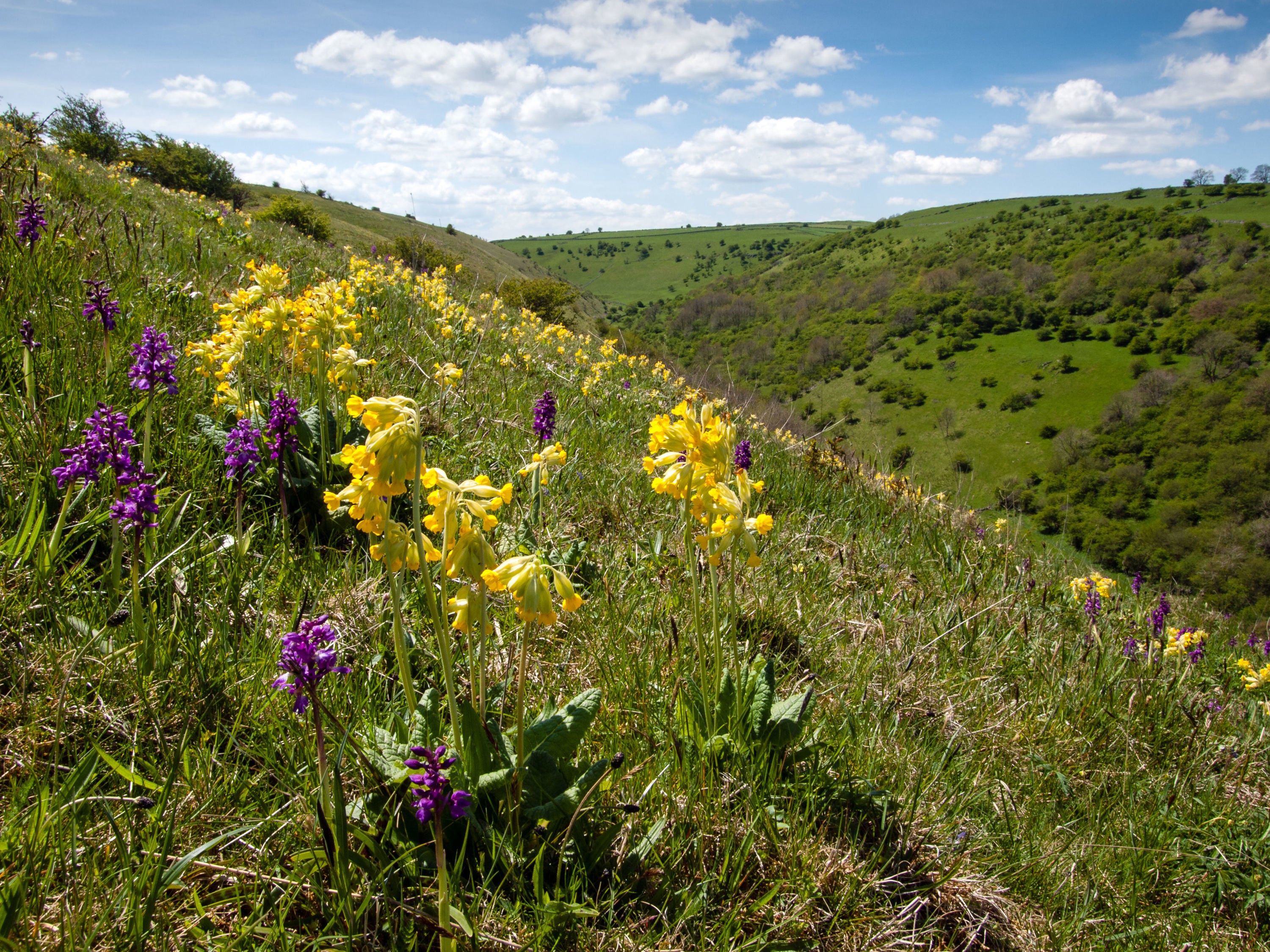Wildflower enthusiasts encouraged to take part in survey of cowslips
Charity Plantlife is calling on public to help monitor genetic diversity of flowers

A nature charity is calling on flower enthusiasts to take part in a citizens' survey of cowslips in a bid to better understand the health of threatened meadows across the country.
Cowslips, also known as cowslops, fairy cups and bunch of keys, are wild yellow spring flowers found on grass verges and close to footpaths.
A cousin of the primrose, cowslips can also be found in meadows. The genetic diversity of the flowers in a meadow helps experts to assess the broader health of that habitat.
Traditional meadows and grassland now cover just 1 per cent of the UK's land area, and they are fragmented and neglected, the wild plant conservation charity, Plantlife has warned.
It is urging the public to continue the legacy of the renowned British scientist and naturalist, Charles Darwin, by taking a close look at the inside of cowslips to judge the genetic diversity of the flowers and the wider health of their meadow habitat.
The charity is launching a UK-wide cowslip survey this April, as part of a European study which started in Estonia, looking at the centre of flowers and recording which of two types of cowslip they are.
The "S-morph" or "thrum" has male parts of the flower visible and the "L-morph" or "pin" has only the top of the female part visible.
This difference promotes cross-pollination between unrelated plants, keeping populations healthy and robust, in a phenomenon found in some flowers which was first understood by Darwin, Plantlife said.
In healthy fields of cowslips there should be a 50:50 ratio of the two types, but it can become imbalanced when populations become small and isolated due to loss of habitat, or because of changes to the way the land is managed.
Knowing the ratio of the cowslips in an area will help experts understand more about the quality of those grasslands, Plantlife said.
Cowslips are not themselves currently threatened because they are still widespread, according to Plantlife's Dr Trevor Dines.
But, as one of the more delicate wildflowers in meadows, which like limited competition from other plants, they are crowded out once fertiliser is added to pastures.
And Dr Dines warned that 75 per cent of remaining wildflower meadows and pastures are less than three acres in size, and "are in tiny fragments - there is no movement between them, they become genetically isolated".
He said: "A single healthy wildflower meadow can play home to an unparalleled and concentrated diversity - often with over 100 species of wild flowers from cowslips to red clover, and oxeye daisies to spectacular orchids.
"This floral feast in turn supports thousands of species of insects, as well as being vital for carbon capture.
"This exciting new citizen science study will allow us to examine the health of our meadows simply by focusing in on the inside of cowslip flowers," he said.
Reports from researchers in Estonia suggest greater instances of the S morph than the L morph in cowslip populations, which could indicate pressures from land use change and declining habitat.
Declining genetic diversity within populations could also make cowslips more vulnerable to climate change as they will be less able to adapt.
People are being encouraged to count 100 different plants spread across the area they are surveying and record which of the two types of flower they are, which should take around 30 minutes to an hour.
Dr Dines added: "If we get enough people taking part, we will be able to take a real health check of the state of meadows."
And he said: "If there's a set of results that come in that's very skewed, that will be a red flag to look at what's going on there."
Dr Dines said Plantlife also wants to know about populations of cowslips in gardens and sown on road verges, to build up a full picture of what is happening across the landscape.
To get started in the cowslip survey, people can visit www.plantlife.org.uk/uk/discover-wild-plants-nature/cowslip-survey
Additional reporting by Press Association
Join our commenting forum
Join thought-provoking conversations, follow other Independent readers and see their replies
Comments